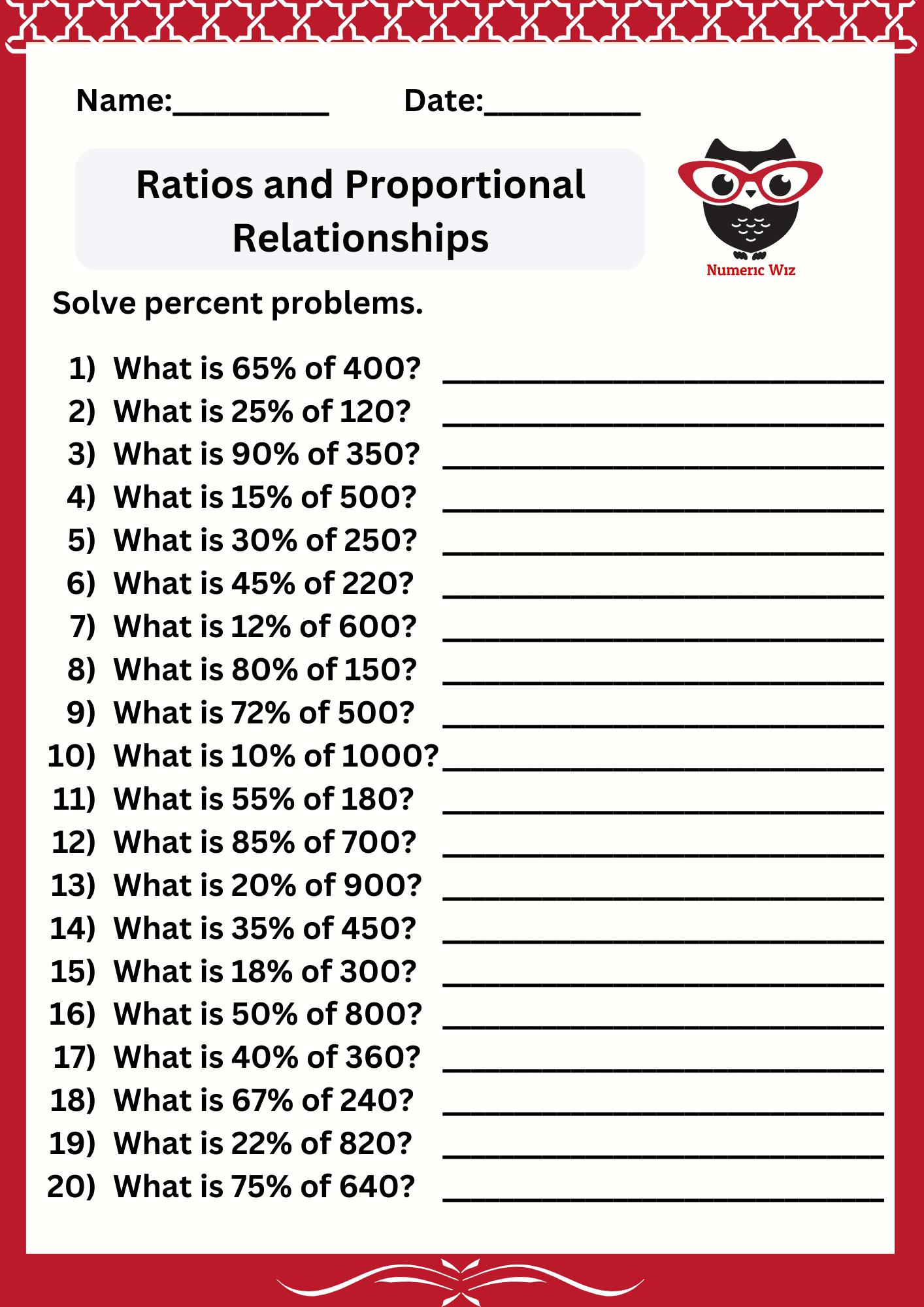
To solve percent problems efficiently and effectively, follow these high-ranked strategies that can be applied across various types of percentage calculations:
![]() Understanding the Problem
Understanding the Problem
Identify what is given: the part, the percent, and what you are asked to find (the total, part, or percent).
![]() Use the Correct Formula
Use the Correct Formula
 For finding a part:
For finding a part:Part = Percent / 100 × Total
 For finding the total:
For finding the total:Total = Part × 100 / Percent
 For finding the percent:
For finding the percent:Percent = Part / Total × 100
![]()
Solve with Accuracy
Perform multiplication and division carefully, ensuring you convert percentages to decimals where necessary (e.g., 25% becomes 0.25 when dividing).
![]() Double-Check Units
Double-Check Units
Ensure the units are consistent. For instance, if the total is in dollars, the part and result should also be in dollars.
Practical Examples
Example 1 (Find a part):
If 40% of a number is 20, what is the number?
Total = 20 × 100 / 40 = 50
Answer: The total is 50.
Example 2 (Find the total):
If 15% of a number is 45, what is the number?
Total = 4 × 100 / 15 = 300
Answer: The total is 300.
Example 3 (Find the percent):
If 30 out of 120 students passed the exam, what percent passed?
Percent = 30 / 120 × 100 = 25%
Answer: 25% passed the exam.
Clarity: Breaking down the problem into steps makes it easier to understand and solve.
Efficiency: Using the correct formula ensures a streamlined approach to solving any percent-related problem.
Accuracy: Verifying the units and calculations improves the overall precision of the solution.
By following these strategies, you can confidently tackle any percent problem with a high level of proficiency!
For a limited time
